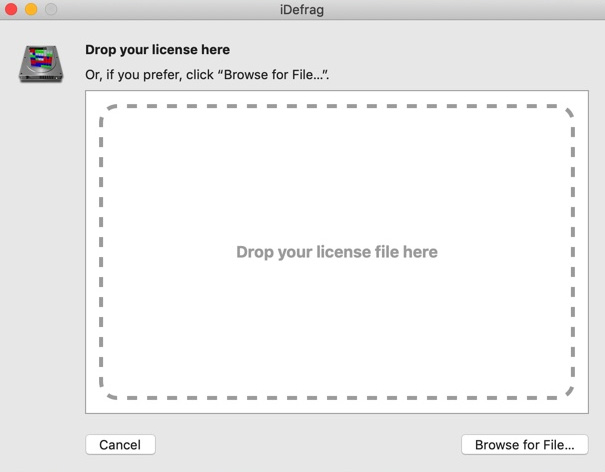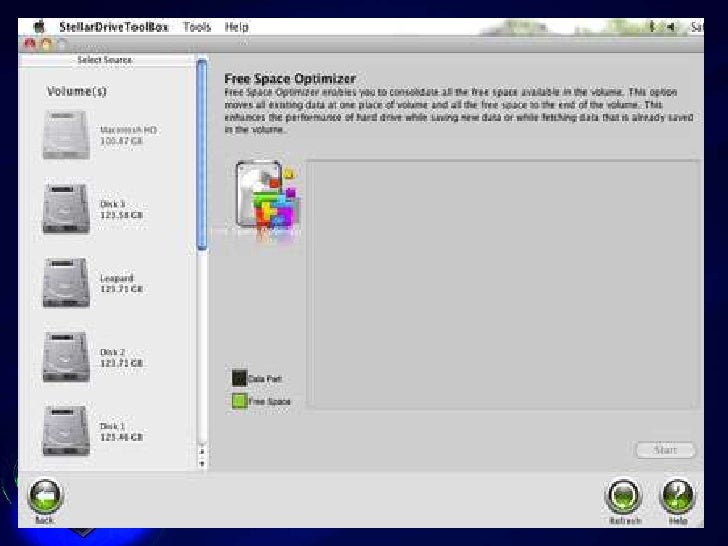- Mac Defrag Free
- Imac Running Slow
- Free Mac Defrag Software
- How To Defrag A Macbook Pro
- Free Mac Defrag Software
- Defrag Mac Hard Drive
- Defrag Mac Hd
Defragging Mac computers became less important with the release of Mac OS X 10.2, an operating system version from way back in 2002. Starting with that version, Macs came equipped with a new filing system that did a better job grouping of data together, reducing fragmenting and the need to reorganize the data later. But now a days, the size of Mac disk is large enough to hold users data. Defragmentation is needed in machines prior to Mac OSX. The Mac OSX are advanced enough to manage its data and optimize Mac drive. Out of many Mac defragmenting tools Stellar drive defrag is the fastest and most reliable Mac software. Defragging Mac computers became less important with the release of Mac OS X 10.2, an operating system version from way back in 2002. Starting with that version, Macs came equipped with a new filing system that did a better job grouping of data together, reducing fragmenting and the need to reorganize the data later. Aug 11, 2017 However, despite the obvious advantage, a Mac running any OS X version later than 10.2 generally doesn’t need to be defragmented. This is because OS X and macOS have their own built-in Apple Mac utilities that clean up fragmented files from the hard drive. Therefore, for most users, it eliminates the need to perform a regular defrag.
- Products
50 000 000+
user downloads
Developed by
Subscribe to Our Newsletter
Get exclusive deal alerts, helpful tips and software release news
Subscribe now - Company
Get information...
About Auslogics
Founded in 2008 in Sydney, Australia, Auslogics has grown into an industry leader in the production of computer maintenance and optimization software for Microsoft Windows. Continue Reading
Press Center
Contact us if you require an evaluation copy of the software for review, screenshots, box shots or other graphics.
Continue ReadingContact us regarding...
Subscribe to Our Newsletter
Get exclusive deal alerts, helpful tips and software release news
Subscribe now - Articles
Tips & tricks from Auslogics
How to fix Windows update error 0x800f0986?What is the WWAHost.exe process on Windows 10?How to turn off Chromecast Media Controls in Chrome? - Partners
Resellers
Reselling/distributing our software
is the ideal way of partnering with Auslogics if you are a repair shop, publisher, reseller, system integrator, VAR, consultant, retailer or solutions provider.
Continue ReadingTechnology partners
Integrate or bundle our software
with your software or hardware solutions to provide your customers with additional value. Build your own customized solutions based on our technology.
Continue ReadingService companies
Tune up customer PCs with our tools
Our solutions are ideally suited to the needs of computer service companies that strive to deliver superior PC optimization and maintenance results to their clients.
Continue Reading - Support
Product Questions
Answers to frequently asked questions on program functionality or technical issues.
See moreRetrieve License Key
Lost or never received your license key (registration key/serial number)?
See more
Retrieve it here.Ask a Question
Access your questions asked through BoostSpeed and view answers in this section.
See moreTop Questions
See most frequently asked questions answered here.
See moreSales Questions
Answers to questions about ordering, payments, licenses, registration, etc.
See moreTechnical Support
Get quick technical support for your purchased Auslogics software from here.
Contact Us
The Optimized Storage features of your Mac help you save storage space by storing your content in iCloud and making it available on demand:
/Academy-How-to-defrag-your-Mac-hard-drive-Thumb.jpg)
- When storage space is needed, files, photos, movies, email attachments, and other files that you seldom use are stored in iCloud automatically.
- Each file stays right where you last saved it, and downloads when you open it.
- Files that you’ve used recently remain on your Mac, along with optimized versions of your photos.
If you haven't yet upgraded to macOS Sierra or later, learn about other ways to free up storage space.
Find out how much storage is available on your Mac
Choose Apple menu > About This Mac, then click Storage. Each segment of the bar is an estimate of the storage space used by a category of files. Move your pointer over each segment for more detail.
Click the Manage button to open the Storage Management window, pictured below.
Manage storage on your Mac
Mac Defrag Free
The Storage Management window offers recommendations for optimizing your storage. If some recommendations are already turned on, you will see fewer recommendations.
Imac Running Slow
Store in iCloud
Click the Store in iCloud button, then choose from these options:
- Desktop and Documents. Store all files from these two locations in iCloud Drive. When storage space is needed, only the files you recently opened are kept on your Mac, so that you can easily work offline. Files stored only in iCloud show a download icon , which you can double-click to download the original file. Learn more about this feature.
- Photos. Store all original, full-resolution photos and videos in iCloud Photos. When storage space is needed, only space-saving (optimized) versions of photos are kept on your Mac. To download the original photo or video, just open it.
- Messages. Store all messages and attachments in iCloud. When storage space is needed, only the messages and attachments you recently opened are kept on your Mac. Learn more about Messages in iCloud.
Storing files in iCloud uses the storage space in your iCloud storage plan. If you reach or exceed your iCloud storage limit, you can either buy more iCloud storage or make more iCloud storage available. iCloud storage starts at 50GB for $0.99 (USD) a month, and you can purchase additional storage directly from your Apple device. Learn more about prices in your region.
Optimize Storage
Click the Optimize button to save space by automatically removing watched movies and TV shows. When storage space is needed, movies or TV shows that you purchased from Apple and already watched are removed from your Mac. Click the download icon next to a movie or TV show to download it again.
Your Mac will also save space by keeping only recent email attachments on this Mac when storage space is needed. You can manually download any attachments at any time by opening the email or attachment, or saving the attachment to your Mac.
Optimizing storage for movies, TV shows, and email attachments doesn't require iCloud storage space.
Empty Trash Automatically
Empty Trash Automatically permanently deletes files that have been in the Trash for more than 30 days.
Reduce Clutter
Reduce Clutter helps you identify large files and files you might no longer need. Click the Review Files button, then choose any of the file categories in the sidebar, such as Applications, Documents, Music Creation, or Trash.
You can delete the files in some categories directly from this window. Other categories show the total storage space used by the files in each app. You can then open the app and decide whether to delete files from within it.
Learn how to redownload apps, music, movies, TV shows, and books.

Where to find the settings for each feature
The button for each recommendation in the Storage Management window affects one or more settings in other apps. You can also control those settings directly within each app.

- If you're using macOS Catalina or later, choose Apple menu > System Preferences, click Apple ID, then select iCloud in the sidebar: Store in iCloud turns on the Optimize Mac Storage setting on the right. To turn off iCloud Drive entirely, deselect iCloud Drive.
- If you're using macOS Mojave or earlier, choose Apple menu > System Preferences, click iCloud, then click Options next to iCloud Drive. Store in iCloud turns on the Desktop & Documents Folders and Optimize Mac Storage settings.
- In Photos, choose Photos > Preferences, then click iCloud. Store in iCloud selects iCloud Photos and Optimize Mac Storage.
- In Messages, choose Messages > Preferences, then click iMessage. Store in iCloud selects Enable Messages in iCloud.
- If you're using macOS Catalina or later, open the Apple TV app, choose TV > Preferences from the menu bar, then click Files. Optimize Storage selects “Automatically delete watched movies and TV shows.”
- In you're using macOS Mojave or earlier, open iTunes, choose iTunes > Preferences from the menu bar, then click Advanced. Optimize Storage selects “Automatically delete watched movies and TV shows.”
- In Mail, choose Mail > Preferences from the menu bar, then click Accounts. In the Account Information section on the right, Optimize Storage sets the Download Attachments menu to either Recent or None.
Empty Trash Automatically: From the Finder, choose Finder > Preferences, then click Advanced. Empty Trash Automatically selects “Remove items from the Trash after 30 days.”
Other ways that macOS helps automatically save space
With macOS Sierra or later, your Mac automatically takes these additional steps to save storage space:
- Detects duplicate downloads in Safari, keeping only the most recent version of the download
- Reminds you to delete used app installers
- Removes old fonts, languages, and dictionaries that aren't being used
- Clears caches, logs, and other unnecessary data when storage space is needed
Free Mac Defrag Software
How to free up storage space manually
Even without using the Optimized Storage features described in this article, you can take other steps to make more storage space available:
How To Defrag A Macbook Pro
- Music, movies, and other media can use a lot of storage space. Learn how to delete music, movies, and TV shows from your device.
- Delete other files that you no longer need by moving them to the Trash, then emptying the Trash. The Downloads folder is good place to look for files that you might no longer need.
- Move files to an external storage device.
- Compress files.
- Delete unneeded email: In the Mail app, choose Mailbox > Erase Junk Mail. If you no longer need the email in your Trash mailbox, choose Mailbox > Erase Deleted Items.
Free Mac Defrag Software
Learn more
Defrag Mac Hard Drive

Defrag Mac Hd
- The Storage pane of About This Mac is the best way to determine the amount of storage space available on your Mac. Disk Utility and other apps might show storage categories such as Not Mounted, VM, Recovery, Other Volumes, Other, Free, or Purgeable. Don't rely on these categories to understand how to free up storage space or how much storage space is available for your data.
- When you duplicate a file on an APFS-formatted volume, that file doesn't use additional storage space on the volume. Deleting a duplicate file frees up only the space required by any data you might have added to the duplicate. If you no longer need any copies of the file, you can recover all of the storage space by deleting both the duplicate and the original file.
- If you're using a pro app and Optimize Mac Storage, learn how to make sure that your projects are always on your Mac and able to access their files.